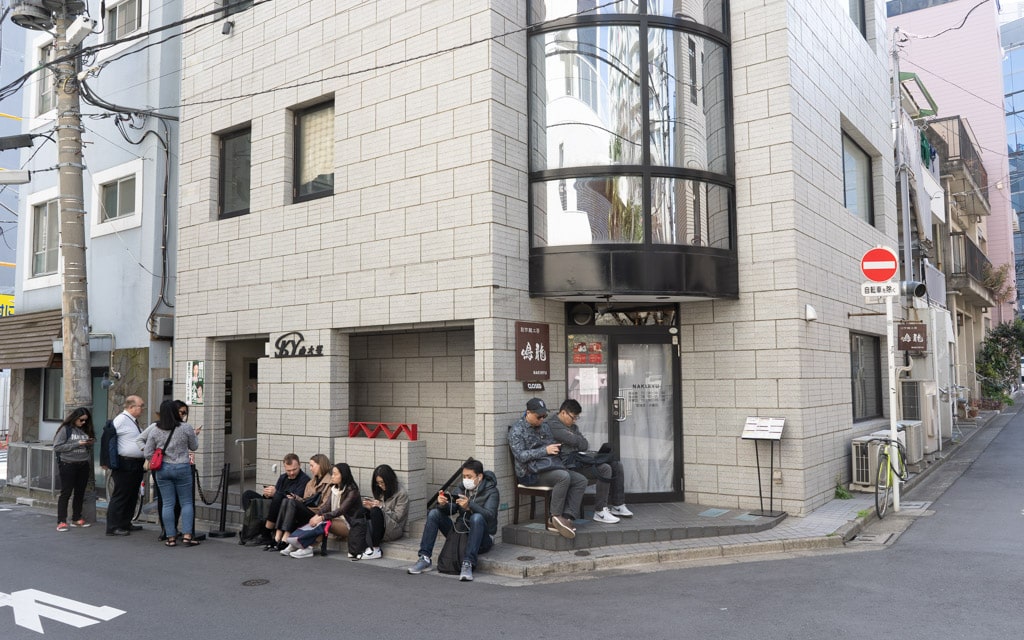
In 2017, Nakiryu became only the second ramen restaurant in Tokyo, Japan, to be awarded a Michelin star for their spicy tantanmen ramen. When you think of Michelin-star restaurants, you might think of fancy, expensive places where you must dress in a coat and tie.
And then there is Nakiryu, a small ramen shop with ten seats in a nondescript gray building in northern Tokyo. Nakiryu is famous for its affordable tantanmen ramen, also known as dandan noodles or dandanmian.
This dish is a Japanese spin on a Chinese soup made with thin noodles in a thick broth flavored with sesame, red peppers, and peanuts.
If you are wondering, the first ramen restaurant in Tokyo to receive a Michelin star was Tsuta, located about a kilometer northeast of the city.
If you are looking for more information about Tokyo and Japan, I highly recommend you pick up a guidebook such as Lonely Planet Best of Tokyo 2020
Table of Contents
The line at Nakiryu
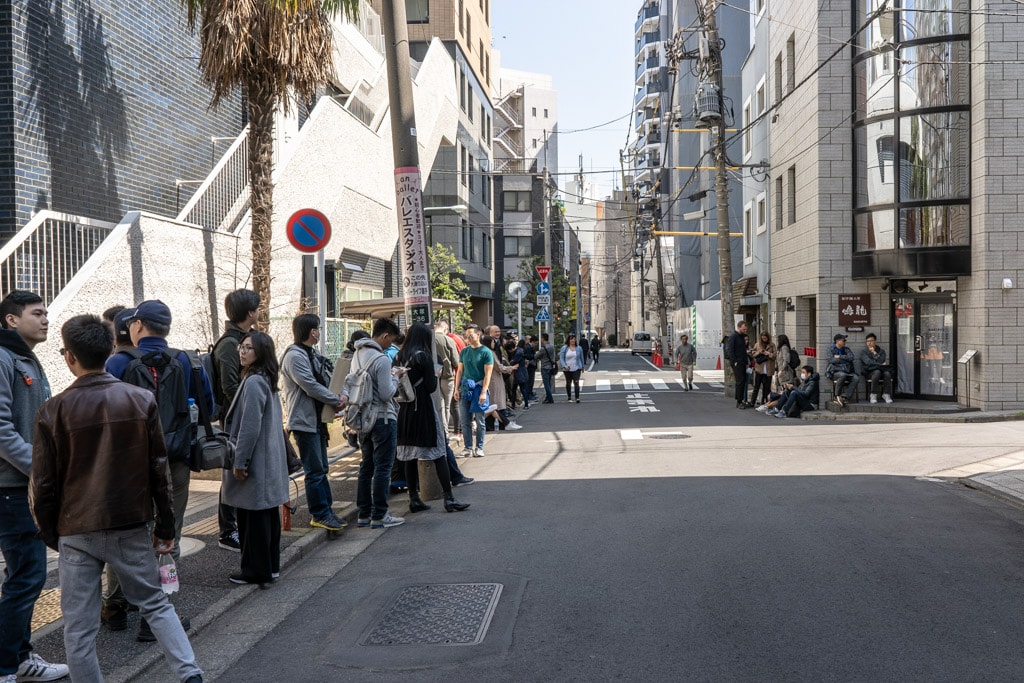
The secret is out with both locals and foreign visitors.
Unfortunately, Nakiryu doesn’t implement a system where you can take a ticket and return at a certain time. And reservations were not accepted.
So, if you want to eat at Nakiryu, you are going to have to wait in line. But it’s worth the wait.
So, how long will you have to wait in line? I arrived 45 minutes before they opened at 11:30 AM, and ten people were ahead. Right before opening, the line extended down the street.
Show up at noon, and you might have to wait two hours or more, with the shop only having ten seats.
One other thing to mention about visiting. Nakiryu limits their portions of soup and noodles for each service. So, I recommend arriving earlier than later.
If they run out, they close early. If you miss the lunch service, you must come back for dinner.
Nakiryu Menu
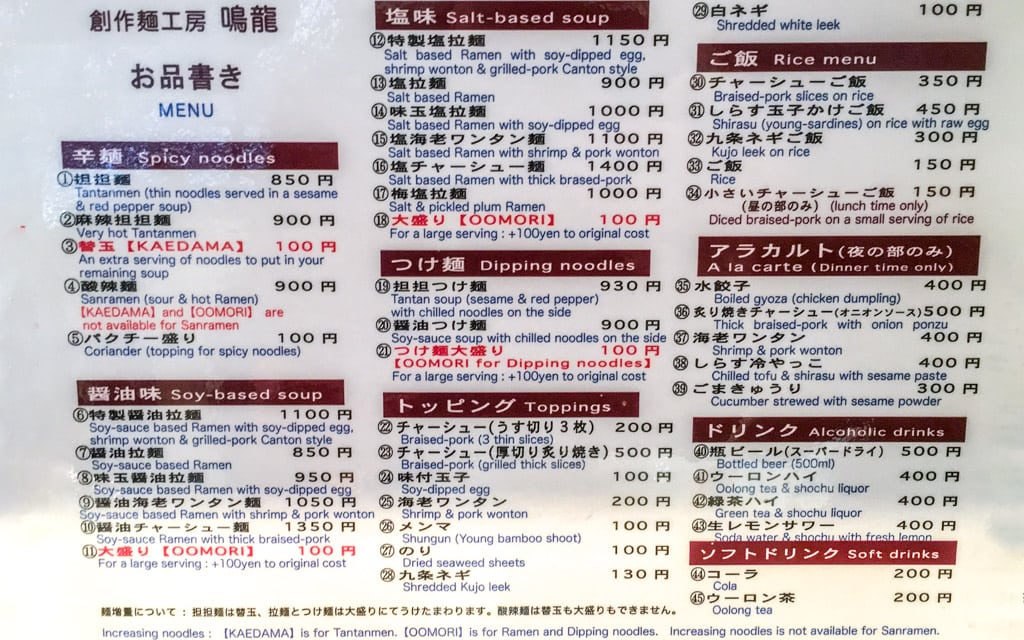
When I was near the front of the line, a worker popped outside and handed me an English menu. After deciding what I wanted, a staff member told me I could order inside from the vending machine.
The menu at Nakiryu featured spicy noodles (tantanmen), soy sauce based soup (shoyu ramen), salt-based soup (shio ramen), and dipping noodles (tsukemen ramen).
Though tempting to try the other options, you want to order the tantanmen. This soup, their bestseller, is why Nakiryu received its Michelin star.
If you arrive hungry and are the type of person who likes to order two bowls of ramen, then I have some bad news for you. At Nakiryu, each person could only order one bowl of ramen.
Fortunately, you could add a large serving of noodles to most menu items for an additional 100 yen.
While a regular serving of noodles was okay for me, I noticed many people ordering the extra noodles. If you are hungry, I recommend ordering a larger portion of noodles.
Interior of Nakiryu
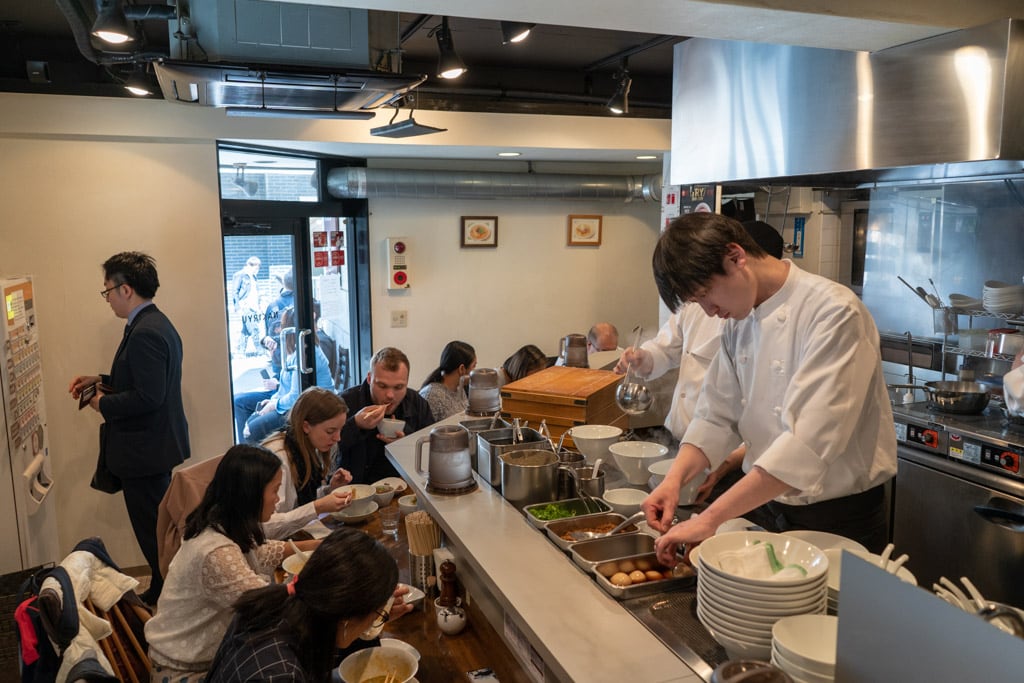
After an hour waiting in line, I made it through the glass door and into the restaurant. Immediately to the right after entering was a vending machine used to order.
The décor was simple, with white walls and exposed pipes and lights throughout the dining room and kitchen.
There wasn’t a lot of natural light flowing into the room, but the space felt bright. The restaurant had a modern, industrial feeling but felt warm and welcoming.
The dining area was small. There were no tables. An angled counter ran across the room, with about ten seats, each with a great kitchen view.
I enjoyed watching the chefs work in the clean, well-organized kitchen.
Other than noises from the kitchen and a few guests remarking how great their ramen was, the restaurant was quiet.
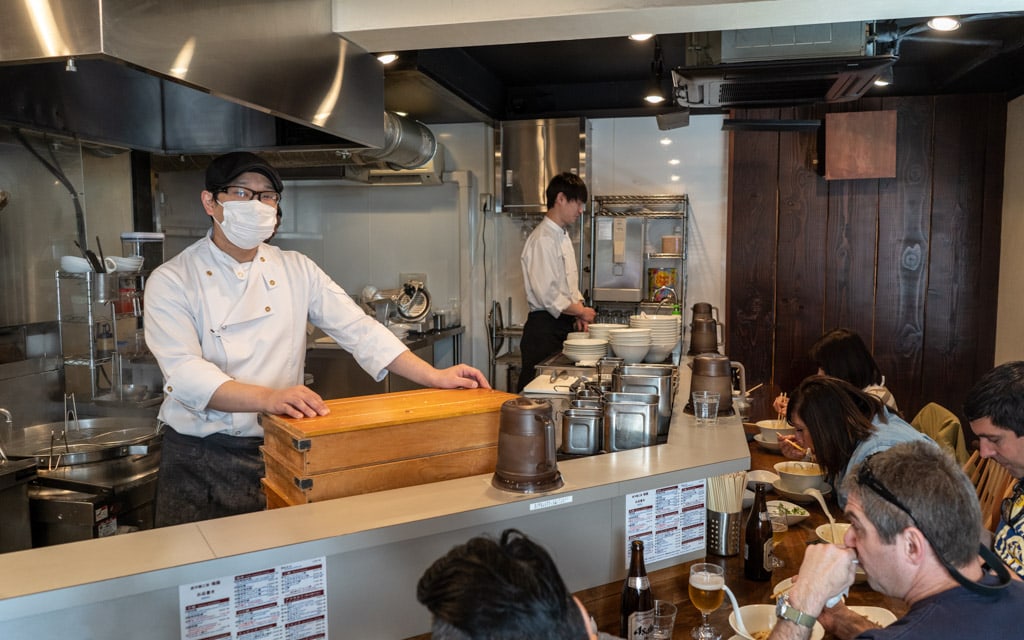
Ordering through the Vending Machine
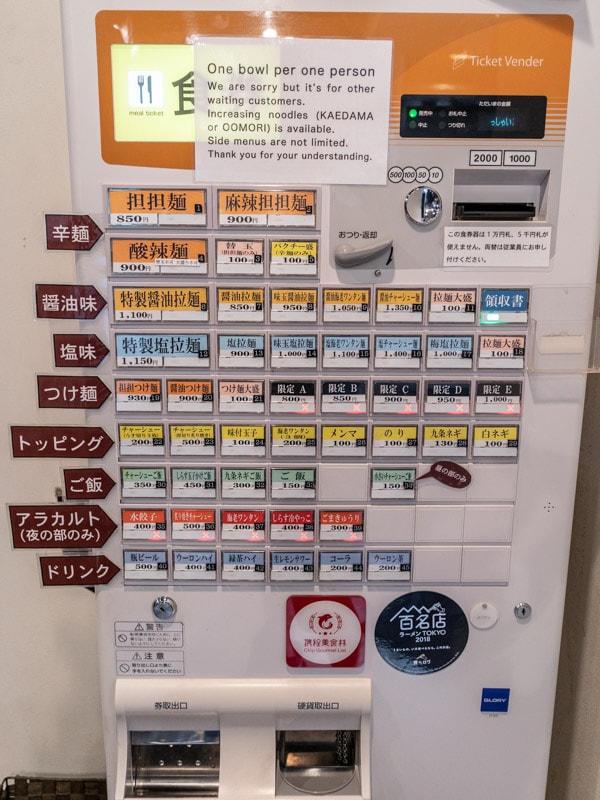
Like many ramen restaurants across Japan, you will use a vending machine to order dishes. While there was an English menu, the vending machine options were only in Japanese.
If you don’t know Japanese, this can be intimidating. But if you match up the numbers on the English menu and the vending machine, you can figure it out.
If you have any issues, ask the staff for help. I am sure they will help.
The vending machine accepted 1000 yen and 2000 yen banknotes and 10, 50, 100, and 500 yen coins. If you plan to pay with a 10000 yen note, get change before arriving.
Make sure to bring enough cash, as you won’t be able to use credit cards.
Once you are ready to order, insert your cash, push the button of the item you want to order, take your change, and take your ticket. When asked, present your ticket to a staff member.
As mentioned before, each guest could only order one bowl per person. For 100 yen more, you could order a large serving of noodles (kaedama or oomori).
Tantanmen
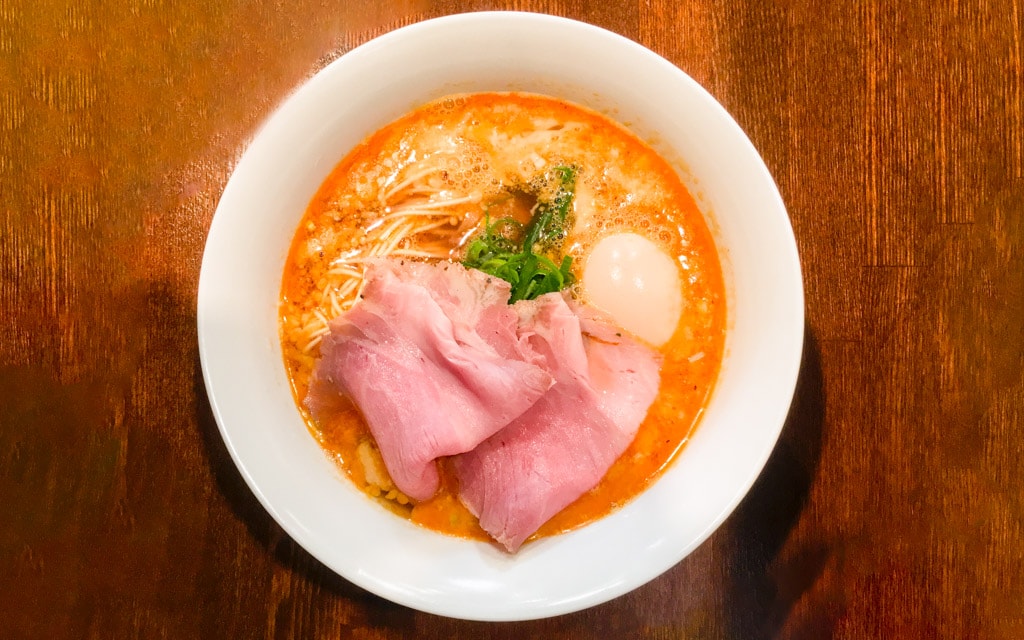
When I ordered the bowl of Tantanmen (850 yen or about $7.73), I wasn’t sure what to expect, but I knew that the bowl consisted of thin noodles, braised pork, and a broth of sesame and red peppers.
If you like things spicy, there was also the Very Hot Tantanmen (900 yen or about $8.19).
Besides the beautiful presentation, the first thing that caught my attention was the milky bright orange broth.
Somehow, the broth was thick and creamy yet delicate at the same time. I have eaten many bowls of ramen in my days, yet I can’t remember a broth as unique or colorful as this.
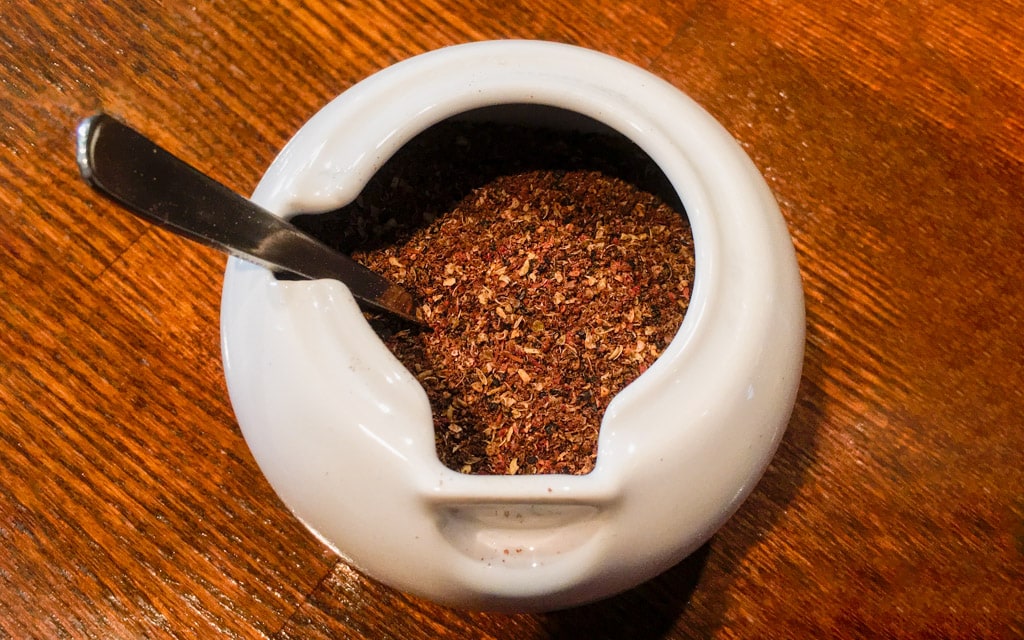
I expected the broth to be blazing hot, but this wasn’t the case. While there was heat from the broth and sansho pepper, the heat level was more mellow and fragrant than spicy.
Depending on how much heat you can handle, this could be a good or bad thing. The heat level was perfect, and my tongue was numb from the sansho pepper.
Complementing the red pepper was a distinct sesame flavor and a hint of sweetness from peanuts. Adding peanuts to a bowl of soup might sound strange, but it is common in Chinese cuisine.
Besides adding flavor, the peanuts added a nice crunchy bite to the tender noodles.
Ultimately, I describe the broth as well-balanced and full-bodied. It was intense but never too spicy, rich, sweet, or porky. Each flavor complemented the other without overpowering any other.
Handmade Tan Tan Noodles
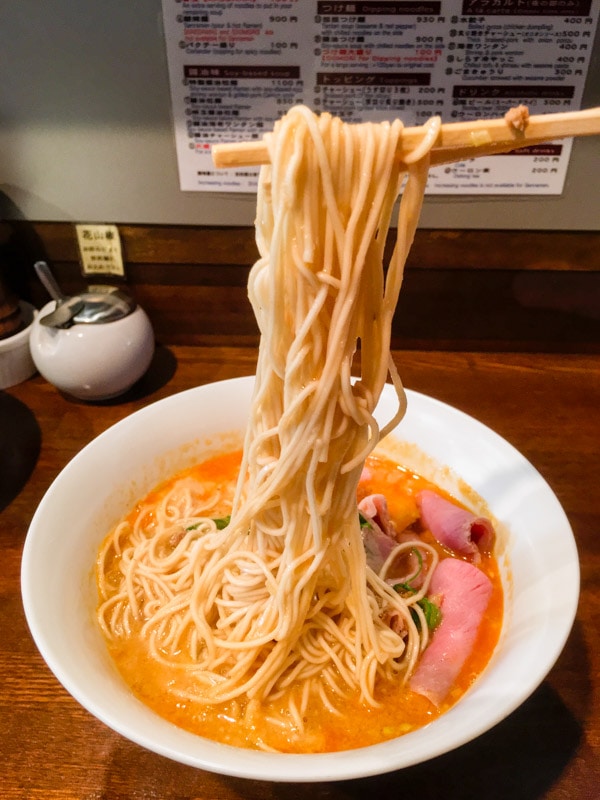
The handmade tan tan noodles were beautiful. I knew they were fresh, made by hand by the chefs before me. The thin, smooth noodles had a chewy, bouncy bite that soaked up the flavors of the milky, orange broth.
As I mentioned, many people ordered a large portion of noodles for an extra 100 yen. I decided to stick with the regular portion.
While I could have eaten more noodles, I found the regular portion generous.
Melt-In-Your-Mouth Sliced Pork
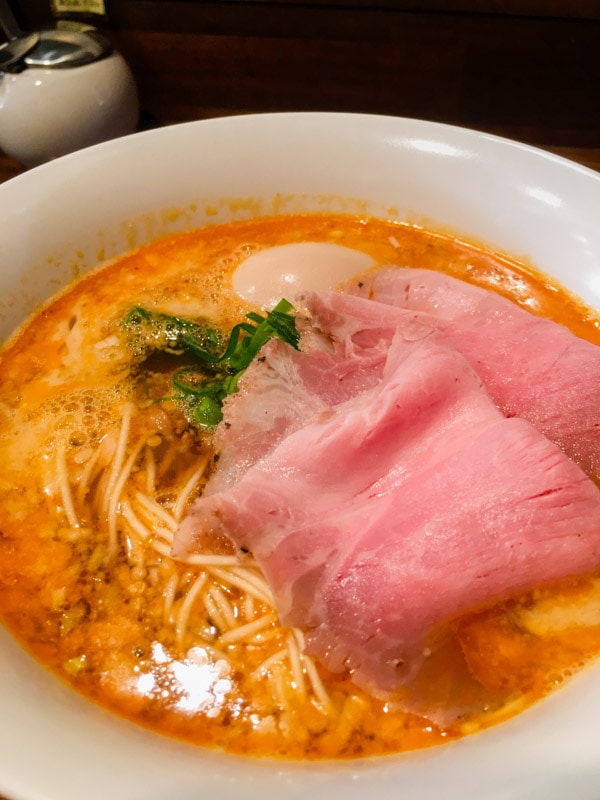
As with many ramen restaurants in Japan, I expected the pork to be thick and fatty. And this was not the case. The thin slices of braised pork reminded me of ham you would find in a sandwich.
The color of the pork was beautiful, like a rare steak. The pork changed colors as each slice cooked slightly in the hot broth.
I was hoping the pork would taste as great as it looked. And it did. Each slice melted in my mouth but still had a chewy bite.
If I closed my eyes, I would have thought I was eating something completely different because of the meaty texture. It was perfect.
While I enjoy a thick chunk of chashu pork in my bowls of ramen, the taste and texture of this braised pork blew me away. If you prefer thick chunks of pork belly, you might not be as excited as I was.
Hidden below the slices of pork was, you guessed it, more pork. The bits of ground pork added richness along with more texture.
Finishing off this bowl of tantanmen was a soy-dipped egg and sliced green onions.
The egg exploded with its bright orange yolk, which oozed out and into the broth, adding a rich, creamy, umami flavor to the bowl.
As I made my way towards the bottom of the bowl, the thickness of the broth remained consistent.
I was expecting the broth to thicken like the tonkotsu ramen I had at Ichiran or Nishiazabu Gogyo did. But this was not the case.
Service at Nakiryu
The service was professional, and the servers were polite, even to international visitors who made up many of their clientele.
With that said, with such long lines out front, the level of interaction between workers and customers was limited.
While never once did I feel rushed, I wouldn’t recommend sitting around and talking after finishing your meal.
Conclusion
While I am not a tantanmen ramen expert, I found my meal at Nakiryu to be the most enjoyable meal on my two-week visit to Japan. While waiting in line can be time-consuming, it was well worth it.
I now understand why Nakiryu was awarded a Michelin star. Every detail of the tantanmen ramen was enjoyable, from the presentation to the flavors.
Go early to beat the crowds and try out the tantanmen ramen at Nakiryu for yourself.
Pros
- Delicious, well presented tantanmen ramen
- Handmade noodles
- Only the second ramen restaurant in Japan awarded a Michelin star
Cons
- Cash only
- Expect long lines, even on weekdays
Address & Contact
2-34-4 Minami-Otsuka, SKY Minami-Otsuka 1F, Toshima, Tokyo, Japan
GPS Coordinates: 35.728682,139.730359
Hours
Wednesday - Monday: 11:00 AM - 3:00 PM
Tuesday: Closed
Map
Last Updated on June 6, 2025
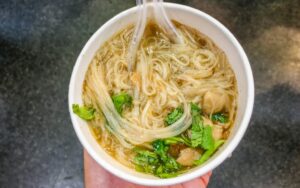
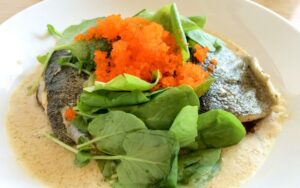
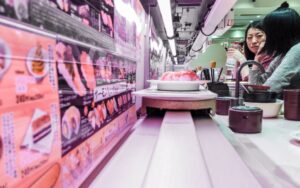

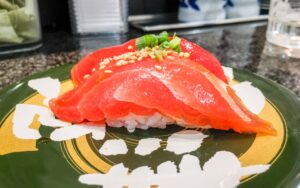

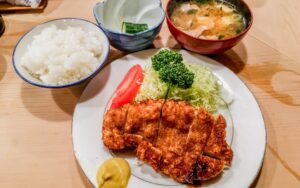
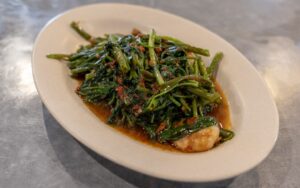
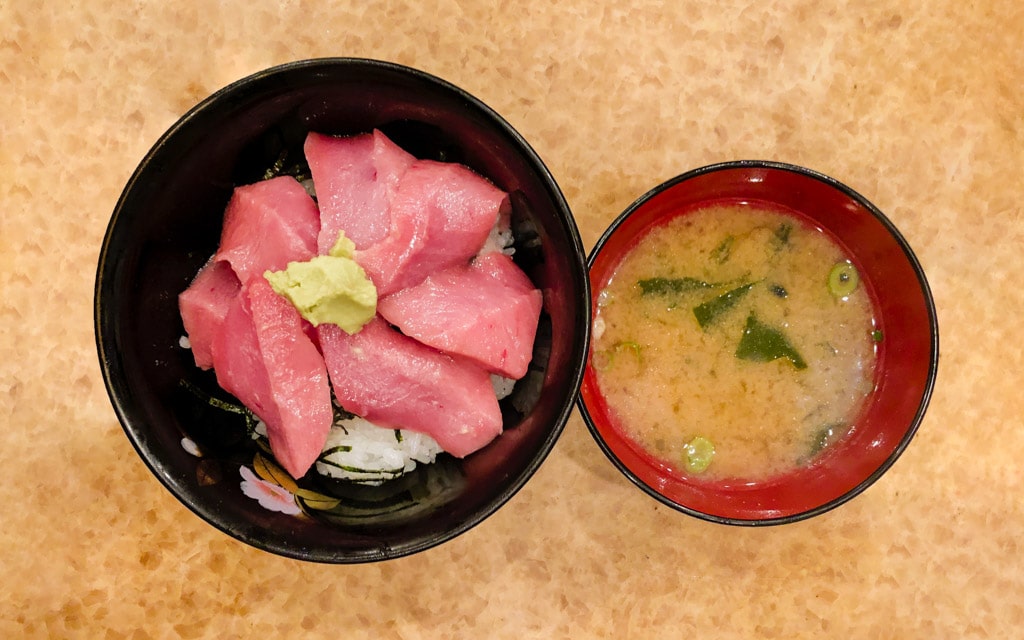

Ooh their tantamen sure looks good! For sure more people would flock to this restaurant if word further spreads out. I would surely be one of those people. 😀 Taking note of this for my next trip to Tokyo!
Kath,
It sure was great! I hope the word doesn’t get out because the lines were already long enough.